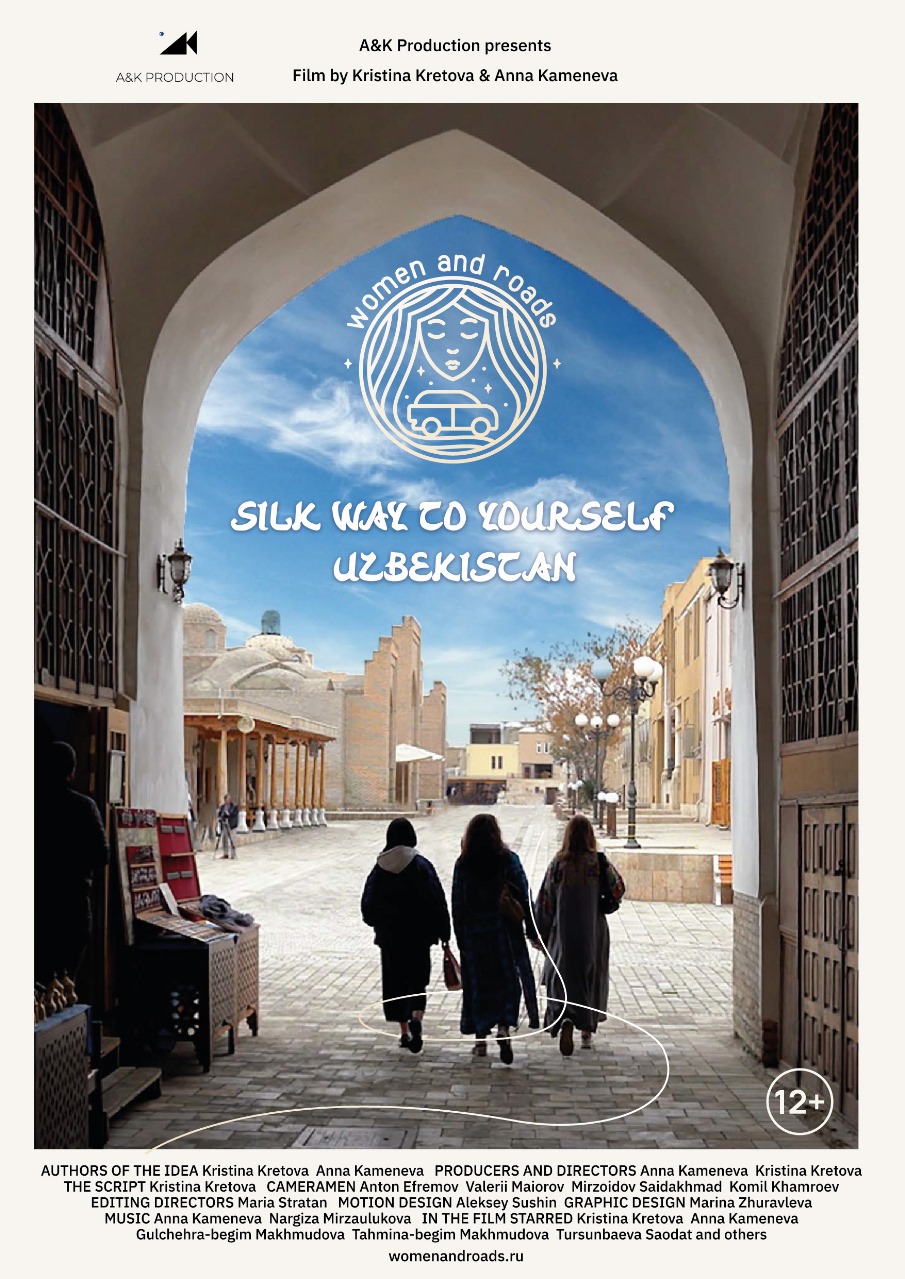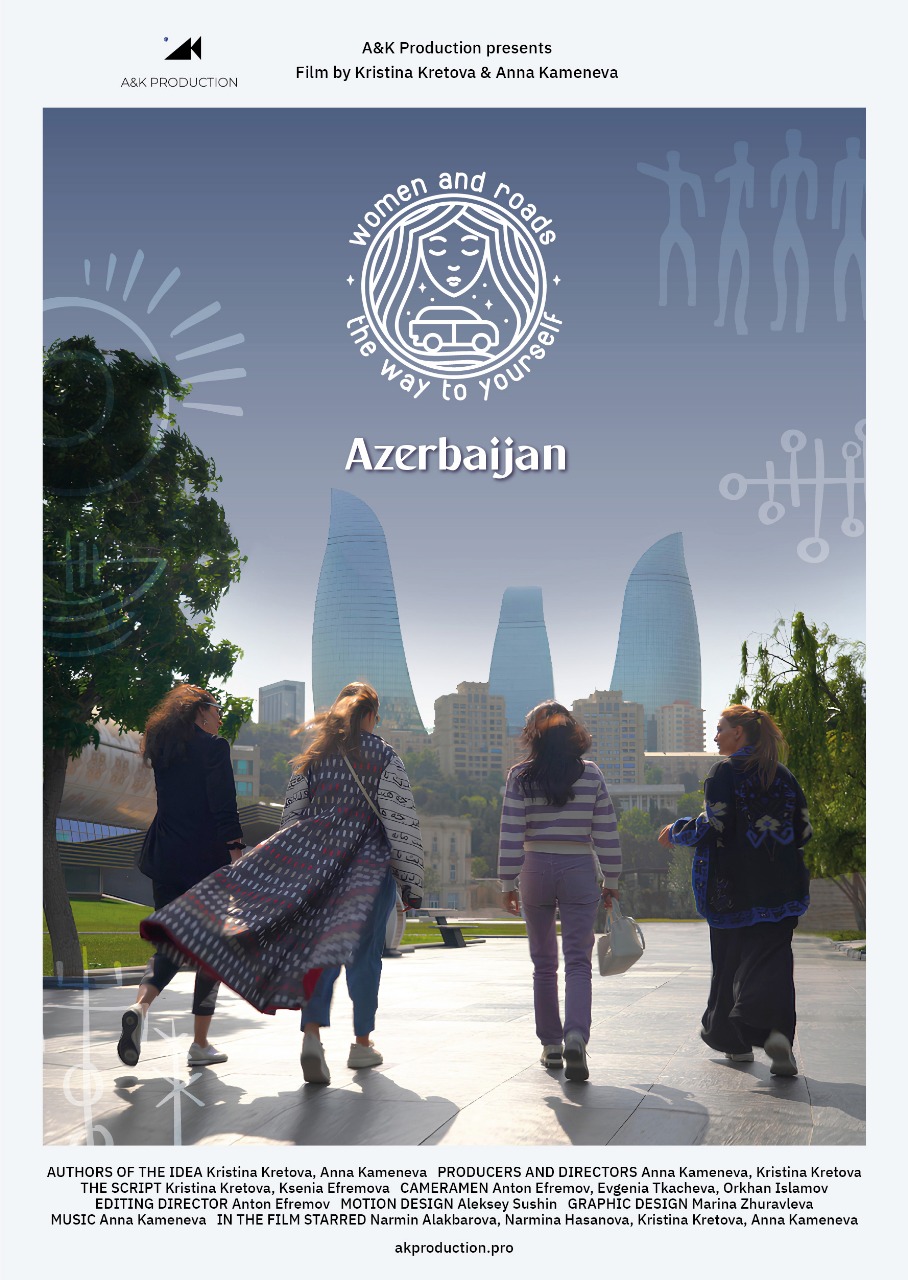
Culture • 12 September, 2025
The Silk Road: Threads of destiny
The Great Silk Road is more than just an ancient trade route. It is a path of knowledge, scents, ideas, inspiration, and human stories, intricately woven into the rich and resilient fabric of world culture. This article presents two heroines, two perspectives, two voices. Gulchehra-begim Mahmudova – an art historian, writer, and perfumer – and Kristina Kretova – a director and the creator of an inspiring film about the women of Uzbekistan – each offers her own unique interpretation of this journey. Each of them reimagines the Silk Road in her own way. Their stories echo one another, like the intertwining threads of ancient silk, forming a single tapestry in which the Silk Road is reborn – as a vibrant energy that unites and inspires.

Gulchekhra-begim Makhmudova:
“Amour, Bonté, Culture, Beauté (Love, Kindness, Culture, Beauty) –
is my life’s credo”.
“Scents do not recognize distance,” wrote Japanese author Ryoko Sekiguchi in her book “The aroma call”. Fragrances are a universal language, understood by people of all ages and cultures – a thread that connects centuries and continents. Alongside silk, perfumes and spices were among the first goods exported from China to Europe, bearing witness to the Silk Road’s significance in global history.
When we began planning our “Eastward, Westward” issue about the Silk Road, the first person who came to mind was Gulchekhra-begim Makhmudova: a PhD in Art History, author of historical books and screenplays, founder of Parfum Gallery, and creator of Uzbekistan’s first fragrance line inspired by cultural heritage – Treasure Collection by Begim Perfumes.
– Gulchekhra-begim, thank you for meeting with us! What sparked your deep love for the Silk Road?
– This theme has defined my entire life. I’ve expressed it through story-based perfumes, fairy tales, novels, and cultural projects. Even my dissertation focused on the exchange of values between Europe and Asia.
It all began with my very first school dictation. I wrote it so well that the teacher accused me of copying and reported it to my father. But the truth is, our family has always been full of readers. My parents, Matlyuba and Said Jalol, brought back books from their travels abroad – not jeans or T-shirts, but literature. My grandmother, Mahbuba Olimkhuja qizi, would tell me legends and folktales at night. It was from her that I inherited old French textbooks – can you imagine, in the Ferghana Valley of the 19th century! There was not a single evening in our home without reading or discussing a book. For my father – an orphan who rose to become Deputy Minister of Transport – knowledge was sacred.
To me, the Silk Road is the road of scents, knowledge, and cultural treasures. Without understanding history, we cannot live the present consciously or build a sustainable, inspired future. That’s reflected in the motto of our brand: “Amour, Bonté, Culture, Virtue.” Culture and education are the ultimate codes of development and messages to the future. – How did the idea for the Treasure Collection come about, particularly the Silk Road fragrance? – I’ve worked in international business for almost 40 years and know how important fragrance is – it accompanies millions of people every day. It’s not just a scent but a spiritual theme, nourishment for the astral body and the soul. We feed the physical body with food; fragrances nourish the soul. Whenever we turn to the God – whether in mosques or churches – there’s always scent: incense, oud, saffron. Fragrance opens the heart and inspires new ideas. I was especially inspired by the scent of my grandmother. She had a tiny Guerlain bottle – a gift from her father, passed down from the Emir of Bukhara. I was around five when I accidentally broke it. She was upset, and I promised her that one day I would give her an entire cart full of perfume. I kept that promise – she was 100 years old when I did. She hugged me and said, “I always knew you would – my imported granddaughter.” That memory still gives me strength and inspiration. – “Imported granddaughter” – what a lovely phrase! – Yes, I represented Uzbekistan abroad as an art historian and cultural ambassador. In 1987, I met Yves Saint Laurent by chance in Morocco. By 1990, we had opened Begim Parfum Gallery. For over 30 years now, we’ve been the exclusive distributor of more than 150 luxury brands in Uzbekistan – from YSL and Chanel to Gucci and Dior. Seven years ago, we launched Treasure Collection – story perfumes inspired by history, heritage, and the Silk Road. In collaboration with Swiss fragrance house Firmenich, we developed Samarkand Spirit, Bukhara Spirit, Ruby of Temur, Koh-i-Nur Diamond, and Silk Road. These perfumes are made at the same French factory where Yves Saint Laurent’s scents were produced – I had the honor of being his student. Each fragrance is rooted in deep research. Bukhara Spirit tells the story of sacred Bukhara – a city of legends, wisdom, and spices as precious as gold. There’s an old saying: while the rest of the world receives sunlight from above, in Bukhara the light rises from the earth itself. That’s why it’s called Bukhoro-i-Sharifa – the Sacred Bukhara. My father lived there his whole life, so this scent holds a special place in my heart. Even the name Begim is a tribute to family. That’s what my father always called me – not “Gulchekhra” or “qizim” (daughter), but Begim. Our ancestors came from Iran, and Begim is a title traditionally used by female descendants of the Prophet Muhammad. My father used to say, “Begim, you are a descendant of the great Prophet – and one of those born with a mission.” – What an incredible story! Your father was absolutely right. Shall we return to the fragrances in the Treasure Collection? – Yes, of course. KohiNur Diamond – “Mountain of Light” – is a scent of strength and triumph, inspired by the ancient legend of the Amazon queen Tomyris, ruler of the Massagetae. To create it, we needed a particularly bold kind of tonka bean – something soft and sweet, yet daringly intense. We found that aroma in the highlands of Machu Picchu, Peru – a place that feels close to the cosmos. I gifted this fragrance to Boris Johnson two weeks before his election victory. It became a bestseller in London and quickly spread across the globe: to Qatar, Kuwait, India, Saudi Arabia, and here in Uzbekistan. – Now our readers know who helped Boris Johnson rise to power – and which perfume to wear to reach ambitious goals. – Exactly. Let me also mention Samarkand Spirit, inspired by the turquoise domes of Samarkand – symbols of purity, power, and the legacy of Amir Temur. Ruby of Temur is dedicated to the legendary ruby engraved with the names of its great owners, starting with Temur himself – a scent of courage and authority. Silk Road represents movement, discovery, and the spirit of great exploration. We’ve recently launched a new line – The Eternal Collection. It includes Magic Valley, inspired by the natural harmony of the Fergana Valley, and Universe of Love, a tribute to the strongest force in the universe – love. Through scent, I strive to express our motto: Love, Kindness, Culture, Beauty. I believe if a child is raised in love, they will not bring harm to others. Only then is peace and a bright future possible. – You’ve already published eight books – four for children and four for adults. What inspires your writing, especially considering the depth of historical material you include? – My family’s story: the love of my parents, my grandmother’s legends, and the legacy of my ancestors. My first book, The Crystal Hookah Flask, was inspired by my grandmother’s herb-filled hookah and her mesmerizing stories. It tells of a quest to find the lost treasure of the last Emir of Bukhara – a dream my orphaned father carried in hopes of feeding his little sister. The second book is about the ruby of Amir Temur and the love of Shah Jahan, who built the Taj Mahal. The third is about the Koh-i-Noor diamond, now part of the British Crown Jewels. The fourth has just been published – it’s called The Treasure of Ancient Khorasan. It follows the adventure surrounding the world’s largest orange pearl, once owned by Caliph al-Ma’mun, ruler of Khorasan – a region that included Uzbekistan, Samarkand, Bukhara, parts of Iran, and several Arab countries. For children, I wrote a series called The Legend of the Spirit of Time. One book from this series, about the greatest route in the world, was turned into Uzbekistan’s first 3D animated film. It received the national “Oltin Humo” award. We’re now working with Uzbekfilm to adapt more stories. I write the scripts myself; during the pandemic, I took online courses from VGIK, Russia’s renowned film institute. – Tell us about your dream – Silk Road Land. – Walt Disney started with cartoons and then built parks around them. It took him 21 years – I’ve been working on my dream for over five. I want to build an educational “Eastern Disneyland” in Uzbekistan, devoted to cultural exchange along the Silk Road. By sheer chance, the husband of one of our brand’s perfumers turned out to be a co-owner of Disneyland parks. Thanks to him, we now have a full feasibility study. In my concept, children enter a magical world through Ulugh Beg’s observatory and journey with the characters from my books – Ajar-Zakhar, the witch Ajina, and the Spirit of Time, Zaman Bobo (meaning “time”, a word that sounds similar in many languages). Guests will find Amir Temur’s arena with horse and camel battles, a sea voyage, an underwater descent, a capsule of eternal life, and something like KidZania – children can try out different professions. The park spans regions from Europe to Southeast Asia, covering caravan and sea routes. We’ve even scripted a night-time immersive drone show – complete with lights and the entire history of the Silk Road in 30 minutes. – You’ve achieved so much across business, perfumery, art history, and literature. How do you manage it all? What’s your secret? – Sometimes I wonder myself. But I believe it all comes from above – from the Almighty, the universe, and my ancestors. My grandchildren often ask, “Grandma, is there eternal life? We want you to live forever.” I tell them, “Yes – eternal life exists in the universe.” In one of my fairy tales, I wrote about the Diamond Planet of Ancestors, where our loved ones reside. When inspiration strikes, it feels like a ray of light from that place – a kind of sign. I truly believe we never disappear; we simply pass into a parallel realm, staying close to our loved ones. Our ancestors guide us – we just need to listen. And I’ve realized that time doesn’t really exist. This year, my brand Begim turns 35, I turn 70 – and I feel like I’m just getting started. There’s still so much to do! I travel a lot. On planes, when everyone else is asleep, I can’t fall asleep. It feels like I’m closer to my parents, to the sky. I listen, catch their thoughts and messages, and jot them down – once in notebooks, now on my phone. That’s how my books are born – as a continuation of memory, a dialogue with history. I write about the past, great civilizations, and cultural treasures that belong to all humanity. By preserving them, we invest in the future. Perhaps that’s my real secret. – Is there something you always take with you on a flight? – Yes – a small book left to me by my mother: an interpretation of the Quran in Uzbek, Russian, and Arabic. I used to keep it closed, but now I read it. It always travels with me. – As a travel magazine, we’re curious: which cities are closest to your heart, and what makes them special to you? – Tashkent and Bukhara are closest to my heart. Also Dubai – it was my mother’s favorite, and I took her there often. Paris feels like a second home. My husband, Sabir Ruziev, is an Olympic medalist and three-time world champion in fencing – a sport rooted in French tradition. France became both a professional foundation and a part of our destiny. – And your favorite places in Tashkent? – Burchmulla. My grandmother and I used to go there to pick nettles. We treated everything with them – made tea, nose drops, decoctions. And of course, the Alisher Navoi State Academic Theater – my great-grandfather helped build it. – What would you recommend to someone visiting Uzbekistan for the first time? – Definitely visit Samarkand, Bukhara, Khiva, and the Fergana Valley with its herbs and ecology. That’s where the soul of the country lies. – What are your top three places to visit in a new city? – The library, a museum, and the opera or ballet theater. – As a perfumer, do you associate cities with scents? – Always. For example, my beloved Paris smells like the Seine – yet every stretch of the river has its own fragrance, from swampy to fresh.I adore strolling along embankments and bridges – they hold memories for me, like living symbols of the past. For several months, we’ve dreamed of telling you about the film “Women and Roads: The Silk Road to Oneself. Uzbekistan” in the pages of our magazine. The theme of this issue, “Eastward, Westward,” turned out to be the perfect opportunity. As fate would have it, the first heroine of our feature – Gulchehra-begim Mahmudova – also appears in the film, as if destiny had gracefully aligned the two stories. “Women and Roads: The Silk Road to Oneself. Uzbekistan” was filmed in 2024 by the directing duo from Saint Petersburg – Kristina Kretova and Anna Kameneva. The film has already won numerous awards at prestigious festivals, including Cannes Arts Film Fest 2025, Los Angeles Independent Film Channel Festival 2024, Miami Women Film Festival 2024, Indo Dubai International Film Festival 2025, and many others. During filming, the team traveled more than 1,800 kilometers across Uzbekistan – visiting Tashkent, Samarkand, Bukhara, and other cities along the ancient route. They conducted dozens of interviews with inspiring women: the founder of an international women’s foundation and one of Asia’s Top 100 Most Influential Women, Saodat Tursunbaeva; the former director of the Savitsky State Museum of Art in Nukus, Marinika Babanazarova; singer Sayyora Musaeva; a cook from Chorsu Bazaar; a young Miss Universe; a cotton field owner; the art director of the “Eternal City” ethnographic park in Samarkand; a designer; a huntress – and many others. The directors, who also appear on screen, ask seemingly simple questions about family and work, prompting stories of challenges that became turning points. Through these, the women share their strength and inspiration. Our conversation about the film and the Silk Road unfolds with one of its directors – Kristina Kretova – author of more than 25 books (many of them bestsellers translated into Arabic and English), speaker, traveler (she gave this interview while in Africa), the founder of a fashion brand. Kristina Kretova: "The Silk Road is far more than an ancient trade route – it is a timeless symbol of resilience and the profound worth of every human journey". – When I first watched your film, my immediate reaction was: ‘As many people as possible need to see this! It’s incredibly inspiring – I wanted to quote every word your heroines said.’” But since the film isn’t yet widely available due to festival regulations, when can we expect its official release? – The film is wrapping up its final festival rounds this summer, so from September 2025, it will be available on streaming platforms. – Kristina, what is the underlying message you wanted to share through your film? – If you look deeper into the narrative, we talk a lot about the fate of active women. Using the metaphor of the route itself, we show the strength of the individual – like silk, woven from countless threads of life’s events and choices: soft, flowing, breathable… yet strong. Struggle and rivalry are pointless. True strength lies in balance – within ourselves and with others, in our families and beyond. Maybe, just maybe, from the balance within each of us, the balance of the universe might emerge. That’s why we make films. That’s what we hoped this one would express. From the very beginning, one of our project’s main goals was to inspire people to travel and retrace our route. We film not just to tell powerful stories, but to forge a deep emotional bond with the places we capture. We want to encourage viewers to embark on journeys – both outward and inward. Kristina Kretova: “The film is meant to highlight that modern Uzbekistan is certainly not what you might imagine it to be, and that the Silk Road is not merely a route from the distant past, but a symbol of resilience and the profound value of every person’s journey–those who lived here and those who live here now. And it’s important for us to share this story with the world!” Anna Kameneva, assistant director, soundtrack composer, singer, and publisher:“Through the diversity of women’s faces and destinies, as well as the dynamics of road travel, we reveal the richness and beauty of our planet. This is a film about real people and their stories – but even realism has many shades. It is the director who chooses which facet of our often imperfect world to show and emphasize. Together with Kristina, we chose inspiration and the beauty of the human soul – but presented honestly, without embellishment. That’s what makes our films feel ‘alive.’ They give people something to reflect on, and for some, even offer hope and a renewed sense of strength”. – You’ve already released two films in the “Women and Roads” series – one about Lake Baikal and Uzbekistan. Why did you choose Uzbekistan? – My first visit to Uzbekistan was for work, and I was struck by the beauty and spirit of the people. The history of the Silk Road captivated me. The more I learned, the more I realized how little I knew. I suggested to my partner and co-director, Anna Kameneva, that we film the project here – from Tashkent to Mizdakhan in Karakalpakstan, where legend says the first human, Adam, is buried. Anna agreed, we quickly found partners and sponsors, and production began. – The meaning behind the film was so powerful that after watching it, I was left thinking – what could possibly come next to match or surpass this intensity? And how does one carry on after witnessing something so profound? – Life itself is a joy, especially after making so many new friends. Uzbekistan has truly become my second home. And the strength of our films always comes from the strength of our heroines. That’s why we can’t stop. Each woman we meet teaches us something. – Tell us about your brand East&West, which, if I understand correctly, was born during the making of the film. What inspired you to create it? – We were deeply moved by the artisans of the Silk Road – like the seventh-generation male embroiderers, and the preserved traditions and technologies of Uzbekistan, Tajikistan, Azerbaijan, and Kyrgyzstan. We wanted to share that through clothing and accessories. – You’re releasing a new children’s book soon. Will it be about Uzbekistan? – My book “The Adventures of Little Mouse Nedo and Baby Camel Omar on the Silk Road” is currently in the works. It will be published in Russian by “Piter” publishing in 2026, continuing the series about Nedo’s travels – he’s already visited Kaliningrad, Saint Petersburg, and Lake Ladoga. In this new story, he befriends a camel from my book about the UAE. I hope it inspires young readers to visit your beautiful country and retrace the ancient Silk Road. The illustrator is your fellow Uzbek native, Zilola Hamidova. – What’s the next country in the “Women and Roads” series? – We’ve already finished a film about Azerbaijan and are launching it on the festival circuit. A film about the UAE is in post-production. And later this year, we plan to film on the island of Socotra (Yemen).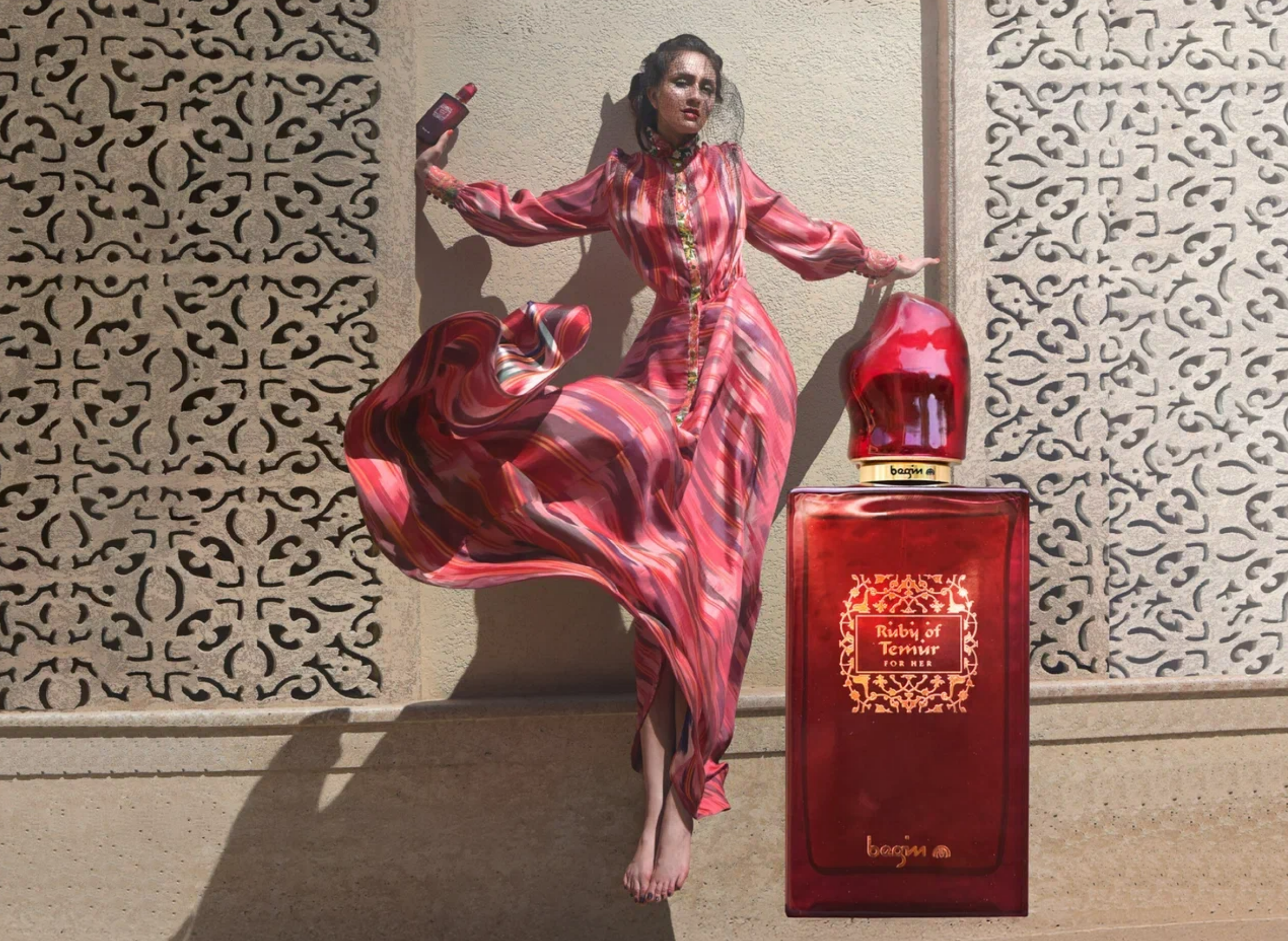
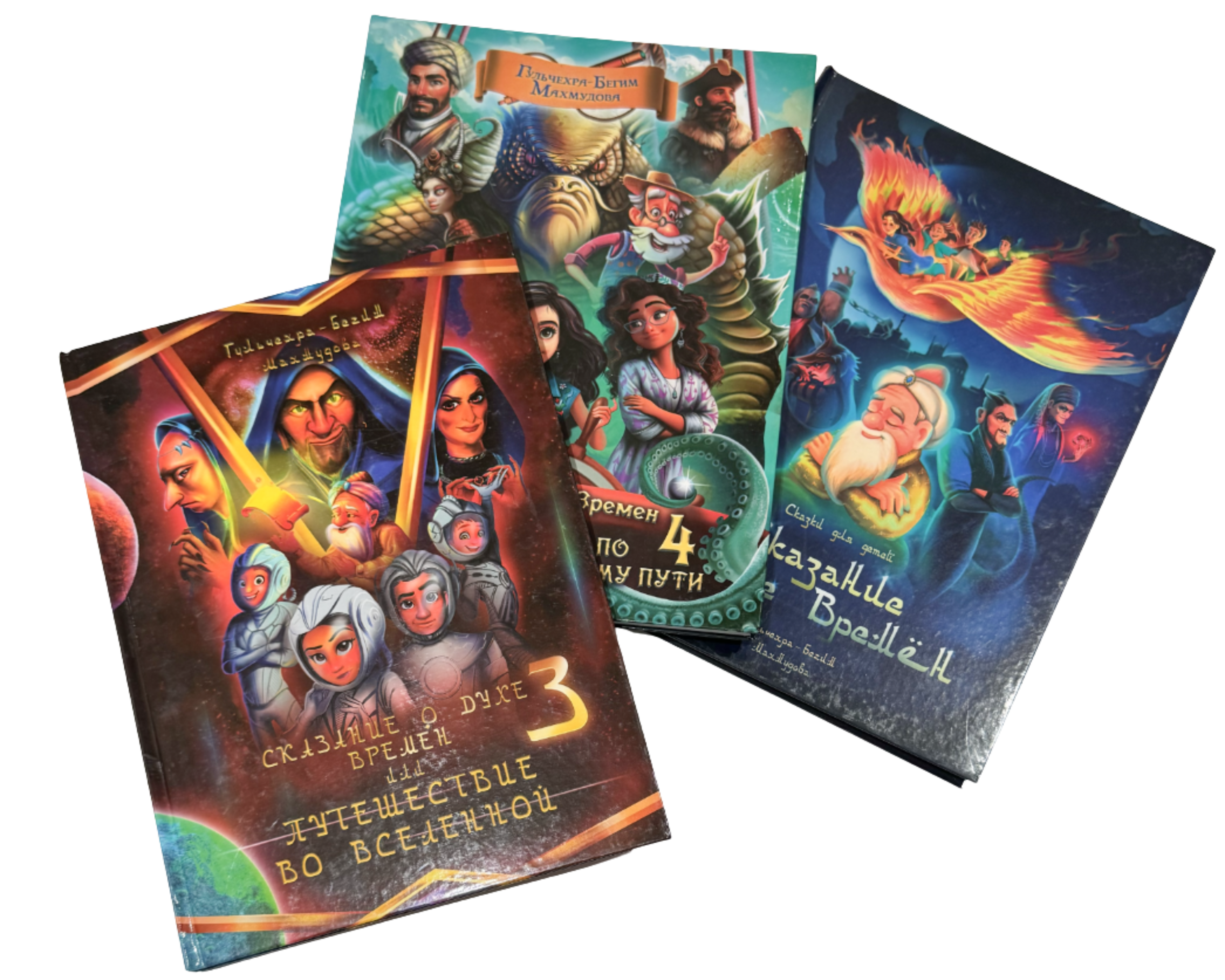
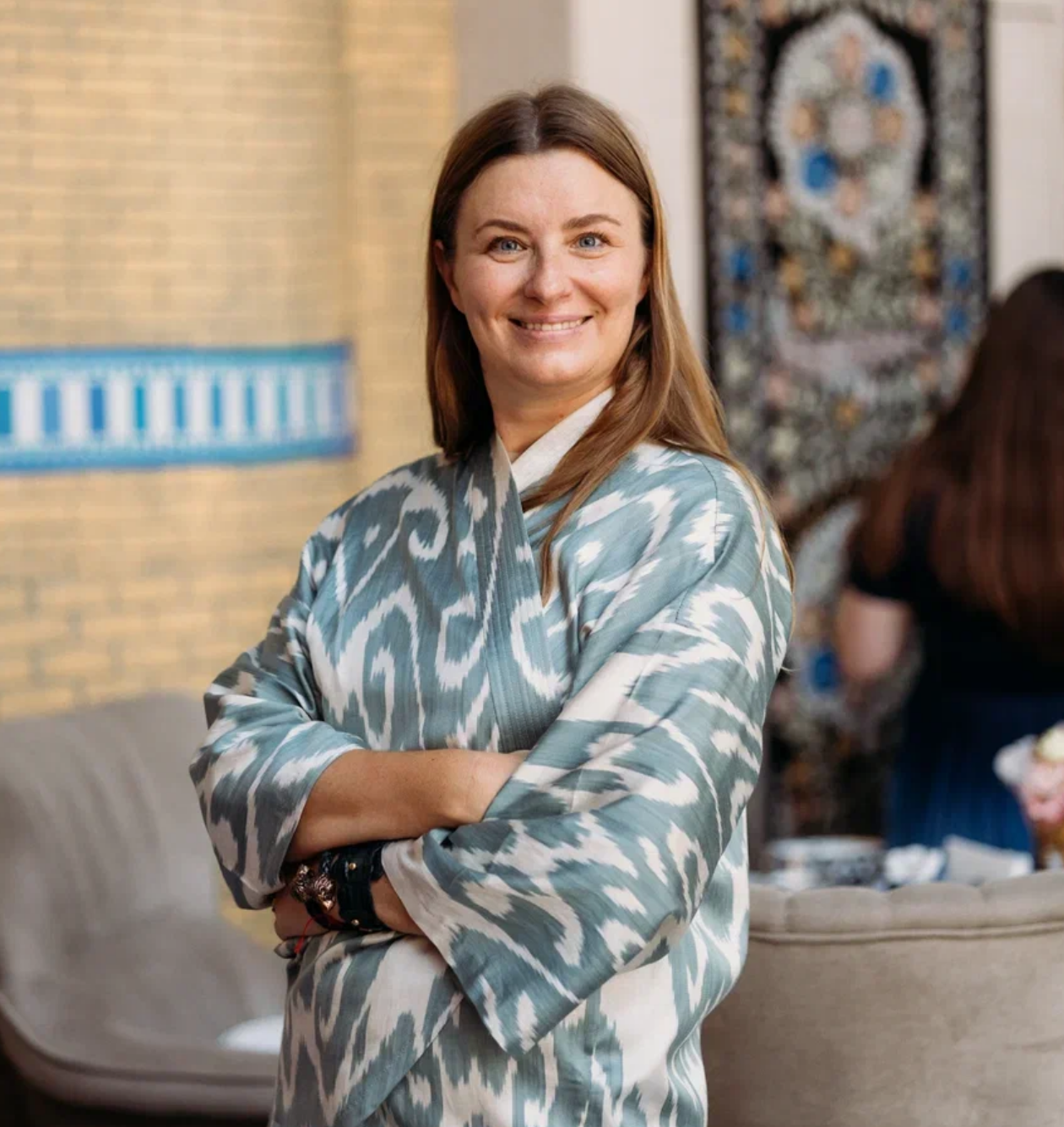
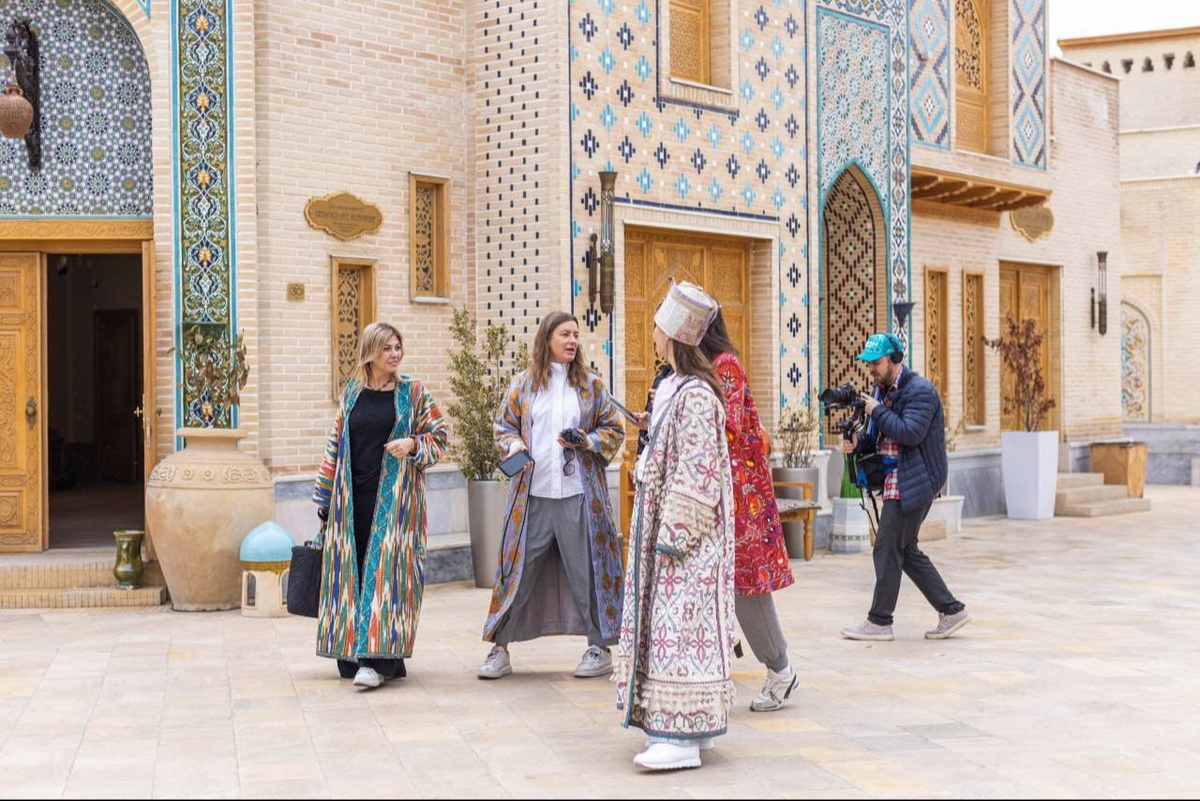
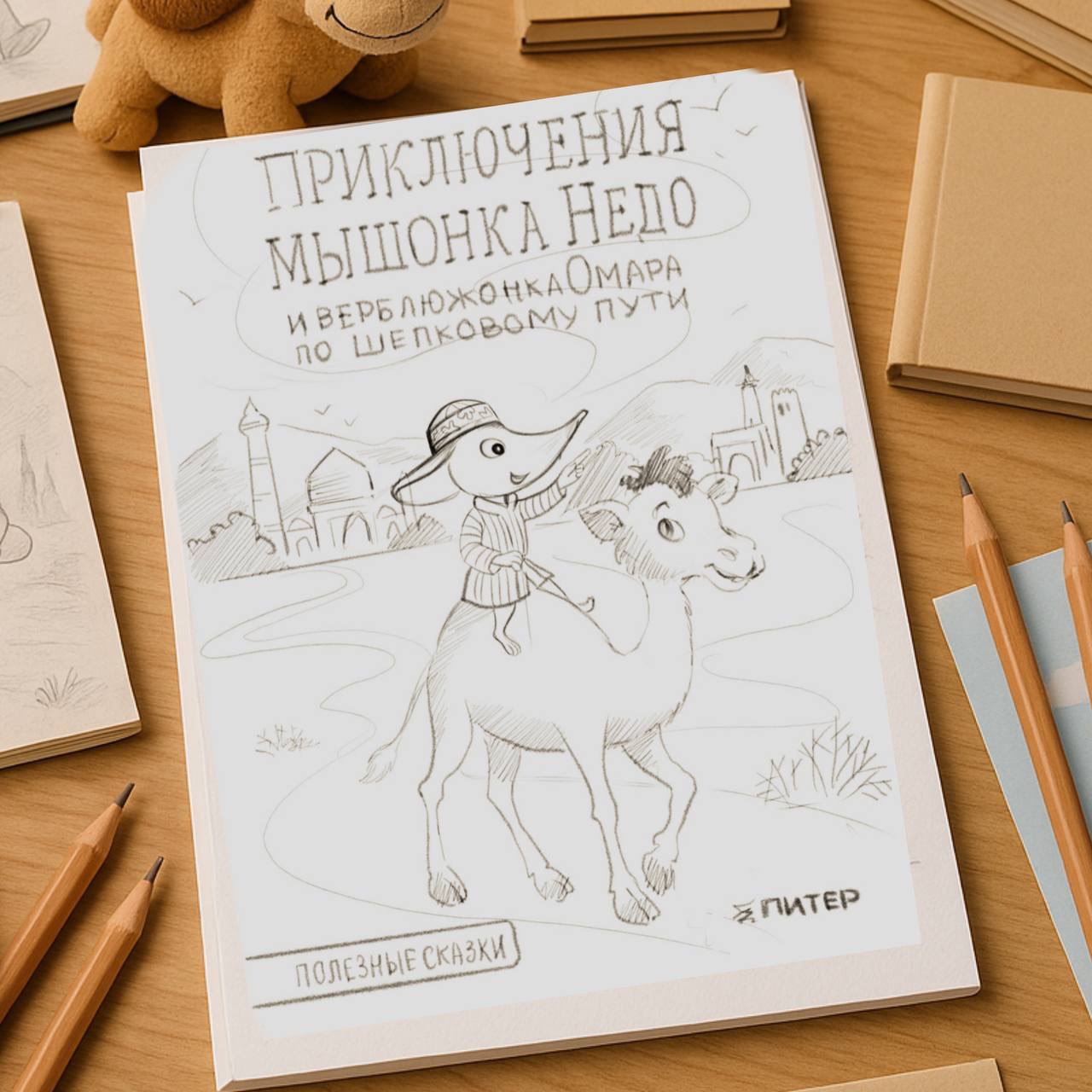
The Silk Road continues – in fragrances and films, women’s voices and personal missions, ancestral memory and dreams of the future. The stories of Gulchehra-begim Makhmudova and Kristina Kretova show how new paths are traced along the delicate, almost invisible threads of fate – inner, cultural, creative. They remind us that the true journey isn’t measured in kilometers. It begins with depth, awareness, and love – for history, for land, and for people.
